What is the real impact of COVID-19 on activity in the construction sector?
How long do owners and developers think it will take to return to pre-COVID productivity?
What long term changes do industry leaders expect to see emerge from this crisis?
Procore put these and other questions to U.S. and Canadian senior executives in construction’s owner and developer space. The results provide a snapshot of that leading segment’s market sentiment as we arrive at an arguable crossroads for the industry. COVID-19’s tsunami-like ripple effect has seen the construction project owner maneuvered into a unique risk environment.
But the survey also shows the robustness of industry faith in its own momentum. According to survey results, a majority of owners expect an economic rebound by the end of 2020 and are taking positive, actionable lessons from the austere business practices and worker safety considerations obliged by the pandemic. Responses show hints of an owner and developer industry fortifying itself, preparing to emerge from the current difficulties with a strong hand.
Additionally, in collaboration with Oxford Economics, the consulting firm McKinsey and Company conducted their own survey of 2,000 senior global executives. Those respondents offered perspective on two scenarios—one in which the virus is successfully contained, and one in which the virus is engaged but still rampant, the embattled recovery slowed by the pandemic.
Owner Sentiment Survey
Aggregated responses to Procore’s survey show owners and developers anticipating a range of effects—including decreased capital spends, tightened lending, broad adoption of construction management technologies, and ultimately an industry rebound.
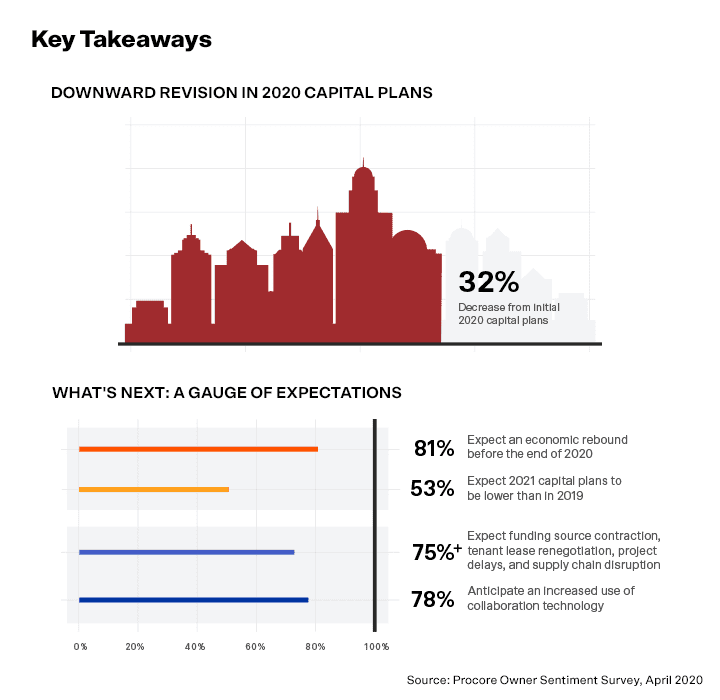
Short-term impacts. Long-term considerations.
At this time, two-thirds of ground-up development projects remain active, versus a smaller percentage of capital improvement projects—
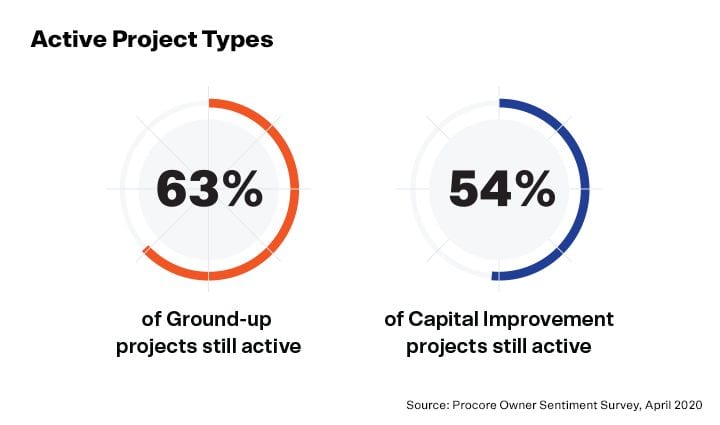
—while 2019’s projected 2020 capital spends are compared to 2020 real-time, revised capital outlays:
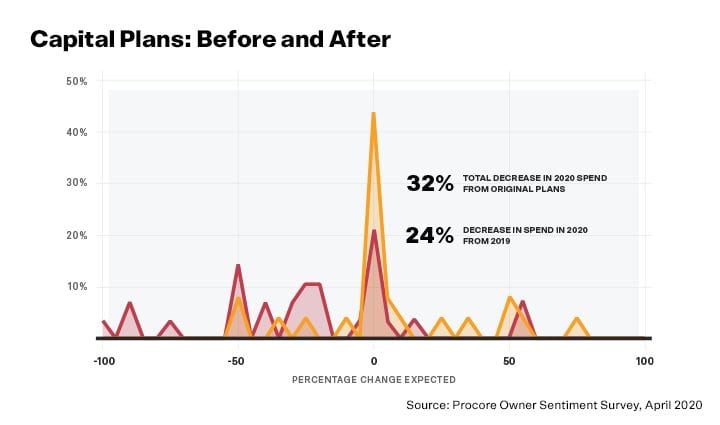
Construction project owners have already taken an array of actions in response to COVID-19, from readjusted project cost projections (reported by 49% of Procore’s respondents) and staggered jobsite schedules (41%) for allowance of social distancing, to the creation of new safety procedures (80%), and even complete shutdown of some project jobsites (44%). Owners everywhere found it important to implement work-from-home scenarios (90%)—just possibly forecasting consideration of a post-COVID distributed workforce better equipped to absorb and disseminate future shocks to jobsite productivity.
Real estate owner Jonathan Santamaria, senior vice president and director of financial operations & IT for Promark Partners, sees his capital projects proceeding through the crisis with less interruption than might’ve been expected.
“During these COVID-19 times, with Procore it is almost business as usual for our ongoing development and capital projects, except for fewer onsite project visits.”
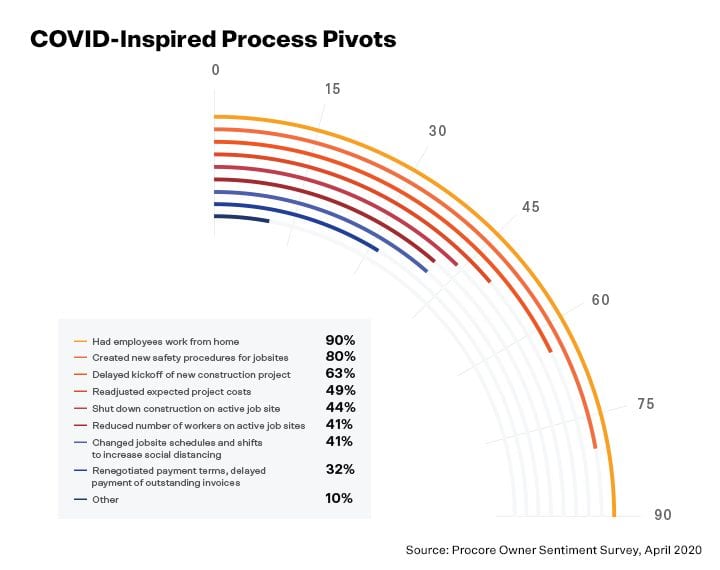
Expected in the medium-term are revised capital spends, cautious funding sources—and a burst of optimism.
Looking ahead to 2021 capital planning and project pipeline, owners and developers are frank about the expected impact of COVID-19 on 2021’s capital spend, versus the 2021 spend they’d projected in pre-COVID 2019. At the same time there is broad optimism about a near-term economic rebound (~74%), the main “confidence index” differentiator being whether the rebound will happen by the end of 2020—or three months earlier than that.
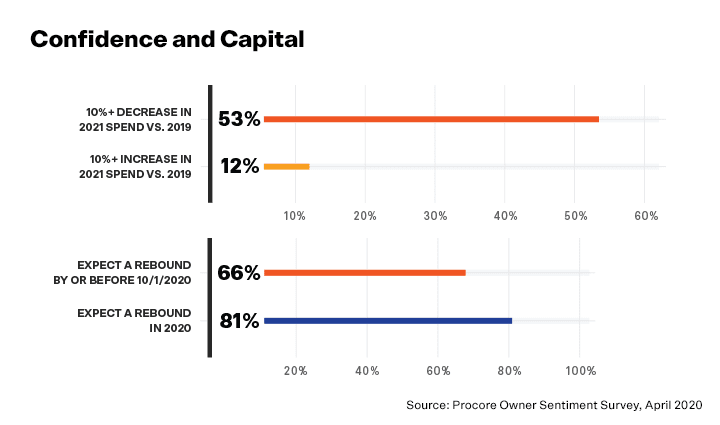
Analysis of the two McKinsey scenarios suggest that in a “contained virus” situation, growth could be 4% in 2021 (vs 2019) and in an “uncontained scenario” there could be an 11% drop in 2021 (vs 2019), with a return to pre-crisis productivity not until Q4 2024.
In Procore’s survey, owners and developers predicted COVID-19’s impact on their projects to take many forms. Supply chain mayhem, project delays, tenant lease renegotiations—from materials vendor to apartment renter, the scale and depth of the global emergency promised a commonality of disruption that had the effect of uniting once-disparate project stakeholders in the construction owner ecosystem.
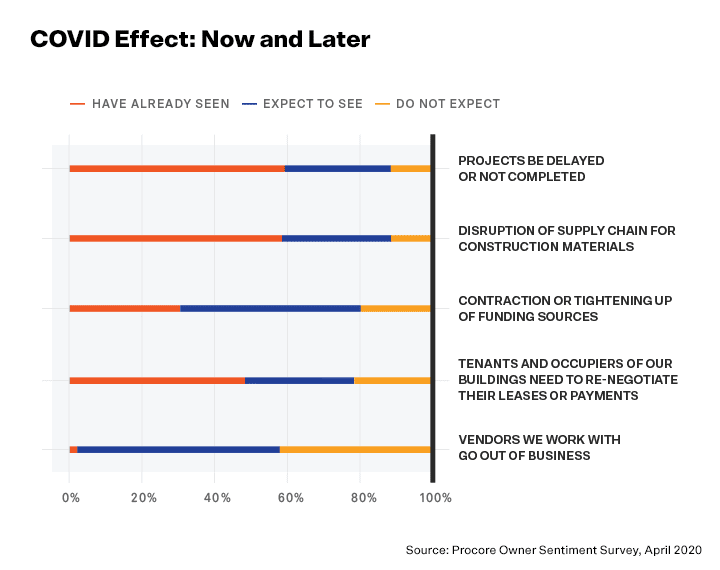
Changes are coming to the Industry. Some of these will be staying on for the long haul.
The eruption of the COVID-19 crisis has forced innovative new protocols onto owners’ practices. Born of dire necessity, some of these measures have actually shown themselves to be process improvements. Companies heatedly reinventing workflow and supply chain structures in order to survive are finding the new methodologies are positioning them to ultimately thrive. Respondents identified which of these COVID-dictated improvements have the best chance of being adopted in the long-term.
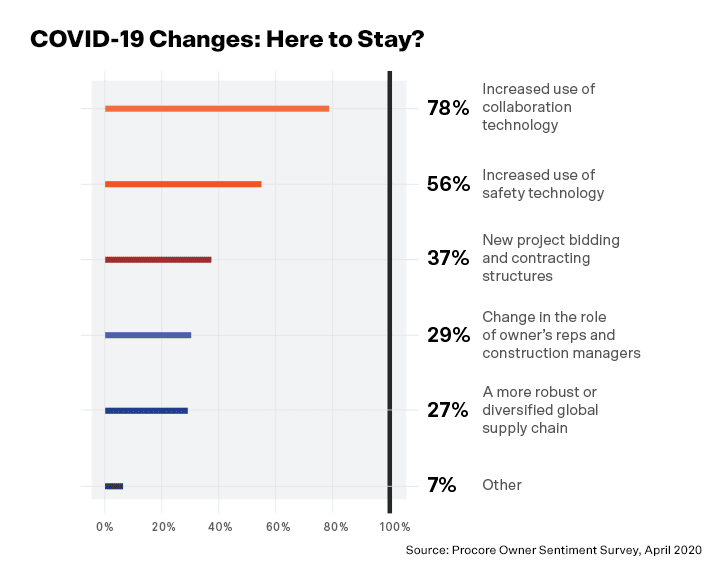
Methodology
Procore invited a diverse cross-section of the owner and developer C-Suite (mainly VPs and above) to participate in a survey. The 41 respondents came from all company sizes—from N million dollars of annual capital projects all the way to N billion dollars—and include real estate developers with in-house GCs, school districts, oil companies, and everything in between.
McKinsey’s data is an analysis conducted by leading partners in conjunction with Oxford Economics.
The Day After COVID-19
The suddenness of the COVID-19 emergency resulted in massive financial exposure for owners and developers. This head-clearing crisis—a period of unprecedented disruption and downturn—is a cataclysm from which lessons are being drawn.
It may well be that the tools needed to move on from this crisis are being forged in the crucible of the emergency itself. Jonathan Santamaria explained that “our partnership with Procore as our SaaS provider is vital in attaining and achieving our continued growth and goals, because it has allowed us to transition right away from working in the office to working remotely.”
In the same way a viral attack produces antibodies, this challenging epoch is catalyzing new construction protocols that will diffuse the blow of the next assault. The owner and developer space is in the midst of a strategic—and historic—inoculation. COVID-19 has triggered an immune response in the built environment. Tomorrow’s owners and developers will be more agile and adaptable than ever before, and less susceptible to being brought low by unforeseen events.
Leave a Reply